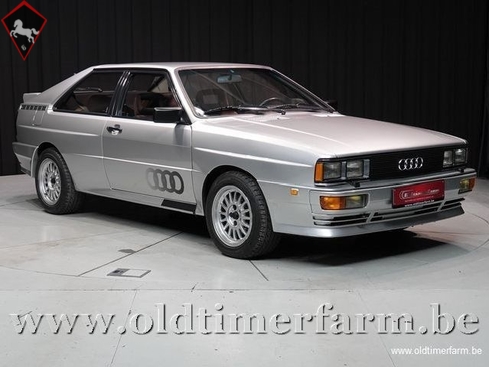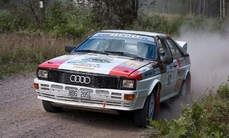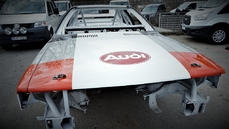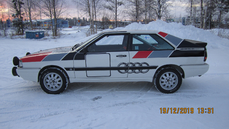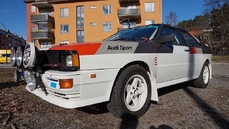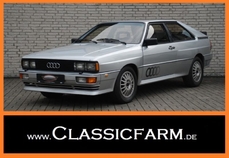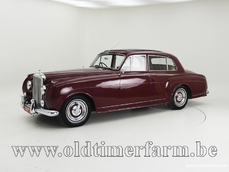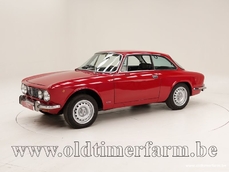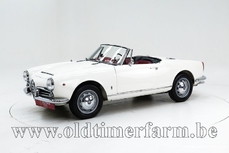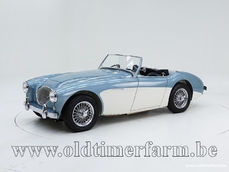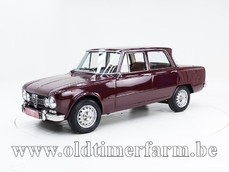Audi Quattro Turbo '82 1982
General description :
Ex France. Good state. Completely original. The Audi Quattro is a road and rally car, first shown at the 1980 Geneva Motor Show on 3 March. The word quattro (means four). The Audi Quattro was the first rally car to take advantage of the then-recently changed rules which allowed the use of four-wheel drive in competition racing. It won competition after competition for the next two years. To commemorate the success of the original vehicle, all subsequent Audis with their trademark quattro four wheel drive system were badged "quattro" with a lower case "q" (The original car with the upper case "Q" in the Quattro name is a collector's piece). The Audi Quattro shared many components and the core of its body style with the Audi coupé, which was a member of the Audi 80 range (B2). It was internally designated Typ 85, a type number it shared with the Audi Coupé GT, Audi Coupé quattro and Audi 4000 CS quattro. Its characteristic flared wheelarches were styled by Martin Smith. The Audi Quattro also had independent rear suspension and independent front suspension. Specifications Bodywork Length : cm (in): 442 (174) Width : cm (in): 168 (66.1) Height : cm (in): 135 (53.1) Wheelbase : cm (in) : 254 Weight: kg (lb) : 1250 (2759) Mechanics. Displacement : inline 5 2144 cc (131 cu in), front-mounted Valve gear : 10 Fuel system : Bosch K-Jetronic injection Gearbox : 5-speed manual Drive wheels : 4 x 4 Maximum power : 197 bhp at 5500 rpm Maximum torque : 285 Nm at 3500 rpm Maximum speed : 223 km/h (136 mph)
http://www.oldtimerfarm.be/en/collection-cars-for-sale/4328/audi-quattro-turbo-82.php
1982 Audi Quattro Turbo '82 is listed sold on ClassicDigest in Aalter by Oldtimerfarm Dealer for €43950.
Car Facts
Car type : Car Make : Audi Model : Quattro Model Version : Turbo '82 Engine size : 0.0 Model Year : 1982 Sub type : Coupé Location : Aalter
Sold
Seller Information
Sold
People who viewed this Audi Quattro also viewed similar Audi listed at ClassicDigest
Other cars listed for sale by this dealer
About Audi
Audi Automobilwerke GmbH Zwickau was founded by August Horch and his partners. In August 1928, the majority of shares in Audiwerke AG were acquired by Jørgen Rasmussen,the owner of Dampf-Kraft-Wagen (DKW) In 1932, Audi merged with Horch, DKW, and Wanderer, to form Auto Union. Auto Union used the four interlinked rings as their logo, the Audi badge today, representing these four brands.After the war, Daimler-Benz had taken 100% holding in the Auto Union company by1959. By mid-sixties they had decided to sell to Volkswagen -a decision Mercedes must be regretting by now. Under VW control they took the two-stroke DKW F102, fitted it with a modern Mercedes designed four-stroke engine et voilá a new modern Audi had emerged. The rest, as they say, is history.
